The week at a glance
- Caspian Plover on Fair Isle
- White-throated Sparrow in Lancashire
- Upland Sandpiper in Aberdeenshire
- Killdeer on the Outer Hebrides
Hail, heavy rain, thunder and lightning followed by soaring temperatures, masses of sunshine and an appealing easterly wind were the meteorological components of a busy, busy week full of exciting migrants and vagrants. As April was bid a fond farewell, the first week, the first day even, of May certainly knew how to grab the birders' collective consciousness...

Caspian Plover, Fair Isle, Shetland (Photo: Mark Breaks)
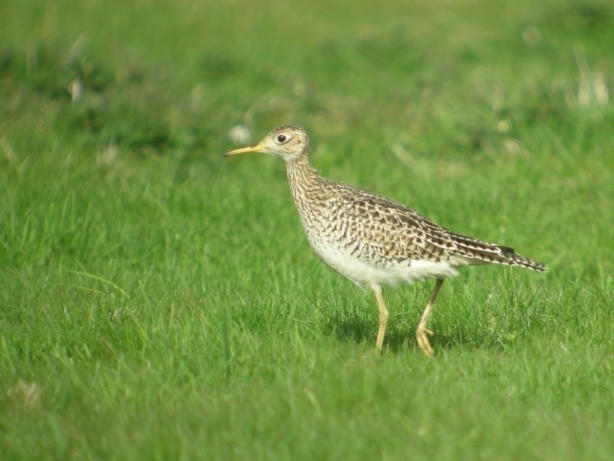
Upland Sandpiper, St. Combs, Aberdeenshire (Photo: Matt Slaymaker)
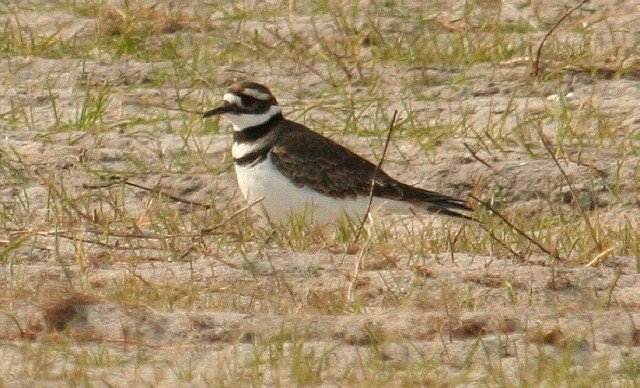
Killdeer, Balranald RSPB, N.Uist, Outer Hebrides (Photo: Andrew Stevenson)
May Day was indeed a red flag day for anyone who happened to be birding on Fair Isle (Shetland). The island's first, and Britain's fourth modern-day, Caspian Plover was discovered there on in the middle of the day on 1st, and continued to show reasonably well, off and on, throughout the rest of the day. A couple of expectant plane-loads were on standby the following day -"no news" was followed by "negative news" and then, it was back again! However, almost within a blink of an eye, she was gone again after a few minutes and despite intensive searches from the newly arrived listers, the bird was AWOL once more. They departed home, several hundred pounds worse off, and a grim day was made even more miserable by a late-afternoon flyby from the Plover that signalled the last sighting. In Lancashire, a White-throated Sparrow was trapped, ringed and released at Heysham NR on 6th. Despite being a rather drab, "tan-striped" individual, it represented the first record for the county and must have been rather an exciting find! There have been almost double figures of the species in the eight springs of the "00s" and many of these have been close to the nation's shipping lanes, as may be expected. With a rather significant rule change being mooted from "on high", will the national records committee be selective with regard to the potential removal of presumed ship-assisted vagrants from the British List? How will they differentiate the numerous White-throated Sparrows for instance? And will the Seaforth Song Sparrow and White-crowned Sparrow be under threat? Or maybe it's just Lark Sparrow (and maybe Fox Sparrow too) that really needs to look over the shoulders...and how will Brown Thrasher fare? No doubts that the Upland Sandpiper found at St. Combs, near Loch of Strathbeg RSPB (Aberdeenshire), on 5th must have made it here under its own steam. The bird was still present the following day (and four Dotterel had joined the party too) and is the fourth record of the species in Scotland during the 2000s - and its arrival date almost matches the spring bird on Foula (Shetland) in 2004, that bird being found on 4th May. It was almost a northern clean sweep this week with the discovery of a Killdeer at Balranald RSPB, North Uist (Outer Hebrides) on 2nd, the bird still present the following day. It is, of course, tempting to muse that this may very well be the bird seen in Shetland earlier this spring, but there is every chance that this is a new arrival heading north along the west coast. This is the second Killdeer on the Hebrides this decade, one spending the Christmas and New Year of 2004-05 on the same island as the bird of 2008. Finally, belated news this week of a Dark-eyed Junco in a garden at Ingleton (North Yorkshire) on 13th April, four days after the bird at Dungeness was last seen.
The adult summer White-billed Diver remained off Burghead (Moray) from 1st-3rd, while off North Ronaldsay four birds (including three adult summers) were seen on 2nd, with one still there on 4th. On 7th, at least two White-billed Divers were in Broad Bay, Lewis (Outer Hebrides). Good numbers of Pomarine Skuas (low hundreds) were seen over the course of the week, mainly along the south coast, with highest counts noted being 38 off Dungeness (Kent) on 5th, 39 from Selsey Bill (West Sussex) on 7th, while from Splash Point, Seaford (East Sussex), 72 birds flew by on 4th, with another 58 there the following day and 66 past on 7th. An adult Long-tailed Skua flew past Dungeness on 4th.

Cattle Egret, Maer Lake NR, Cornwall (Photo: Mark Worden)
Cattle Egrets were still a distinct presence as some of the autumn invaders clocked up another new month on their calendars. In Cornwall, several birds remained around the area between Sancreed and Chysauster, with nine birds at the latter site to 7th. Elsewhere in the county, singles were noted at Maer Lake NR, near Bude, and at the Walmsley Sanctuary on 4th. The five birds at Tamerton Foliot (Devon) were still present on 1st-2nd while in Dorset the bird at Lytchett Bay was present from 1st-5th and another was again at Lodmoor RSPB on 2nd-4th. In West Sussex, two birds were at Pagham Harbour LNR on 1st and the two birds in Gloucestershire, at Frampton-upon-Severn, remained to 5th. The lone birds at Llandre (Ceredigion) and Hoylake (Cheshire) made it to another week, and "new" birds appeared at Attenborough NR (Nottinghamshire) on 2nd-3rd before moving to Lound GPs on 6th-7th, with another at Wigan Flashes LNR (Greater Manchester) on 4th-5th.
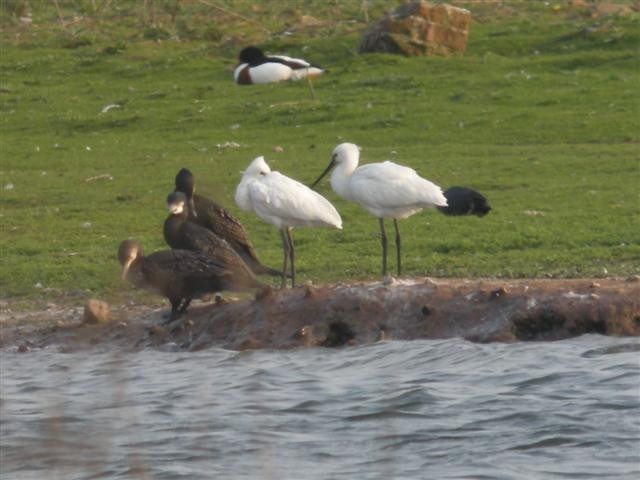
Spoonbill, Seaforth LWT (Permit only), Lancashire (Photo: anon)

White Stork, Loch of Strathbeg RSPB, Aberdeenshire (Photo: Dominic Funnell)
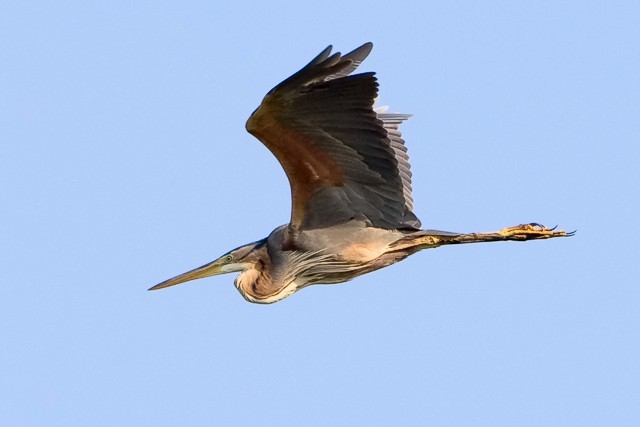
Purple Heron, Claire Mare NR, Guernsey (Photo: Paul Hillion)
There were four Great White Egrets to report this week: one flew past Frampton-upon-Severn (Gloucestershire) on 3rd, with another noted flying high over the beach at Ovingdean (East Sussex) on 5th, while on 6th, singles were seen on the Isle of Man, flying over Douglas, and another heading north over Chichester Harbour (West Sussex). There were fewer Spoonbills this week, with some 20 birds reported. Once again it was Swineham Point and Middlebere (Dorset) that claimed the highest total: five birds seen at the two sites on 3rd-6th. On 4th, notable singles were seen at Mey (Highland) and Amwell GPs (Hertfordshire) while on 5th, two first-summers appeared at Alvecote Pools (Warwickshire) before being seen at Willington GPs (Derbyshire) later the same day, only to return to Alvecote the following day. On 7th, two first-summers were seen over Seaforth LWT (Lancashire). Staying in Lancashire, the Glossy Ibis went walkabout this week, heading to Brockholes Quarry on 1st, then appearing near Inskip on 3rd, where it remained to 5th. Fewer than ten Common Cranes were seen this week and included a threesome touring a few English counties this week; initially seen heading south over Runcorn (Cheshire) on 3rd, the birds appeared at Newport (Shropshire) on 4th and then Bridgnorth (Shropshire) on 5th, before appearing in Worcestershire later the same day, at Clifton Pits and Hartlebury. What was presumably the same trio were then seen over New Hythe GPs (Kent) on 6th. On 7th, two birds were seen over Langham, Salthouse and Beeston Regis (Norfolk). Singles were seen in Kent, Gloucestershire, East Yorkshire and Lancashire. At the same time as three Cranes were being reported, the three White Storks were also being seen, a long way south of where they were last week. On 3rd, the birds were seen at Cheadle (Greater Manchester) and on 6th they flew east over Swillington Ings (West Yorkshire). Single White Storks were seen at West Ilsley (Berkshire) and then over Farmoor Reservoir (Oxfordshire) on 3rd. Another White Stork was seen flying over Warleigh Point (Devon) on 3rd and in Aberdeenshire, one was seen at Loch of Strathbeg on 7th. The first Black Storks of the year were seen this week: one flew over Paxton Pits NR (Cambridgshire) on 4th and another was seen in Cleveland, over Scaling Dam Reservoir on 6th. Three Purple Herons were seen this week: an adult flew over Seaforth LWT (Lancashire) on 3rd, with other flyovers noted at Dawlish Warren (Devon) on 5th and Dungeness (Kent) on 6th. Spotted Crakes have already made it back to breeding grounds on Islay this spring, but one at Strumpshaw RSPB (Norfolk) was certainly of note, calling "for several days" prior to 3rd, and still there on 4th.
A Ross's Goose was seen at Hauxley NR (Northumberland) on 2nd, while the bird at Pilling Lane End (Lancashire) remained to 4th. A flock of eight Snow Geese at Flaws, South Ronaldsay (Orkney) must have been a grand sight, but could they have been genuine transatlantic vagrants? Two Black Brants were seen this week, one spending 1st-5th at Hoo St. Werburgh (Kent) and the other was noted at Kinnegar Shore (Co. Antrim) on 2nd.

Surf Scoter, Largo Bay, Fife (Photo: Mark Wilkinson)
The female Black Duck was still at Marloes Mere (Pembrokeshire) to 6th, while the drake remained at Blanket Nook, Lough Swilly (Co. Donegal), also to 6th. In South Yorkshire, the drake American Wigeon was at Rother Valley Country Park to 1st, while Green-winged Teal numbers dropped to just three birds: singles remained in the Kilnsea and Spurn area (East Yorkshire) to 2nd and at Eyebrook Reservoir (Leicestershire) to 3rd, while a new individual was seen near the Iron Road, Salthouse (Norfolk) from 2nd-6th (with presumably the same bird paying a brief visit to nearby Cley Marshes NWT on 6th). The drake Lesser Scaup at Chew Valley Lake (Somerset) was last seen on 1st, and a new bird, another drake, was found at Cleasby GPs (North Yorkshire) on 7th. A Ring-necked Duck on Lough Swilly (Co. Donegal) on 6th was the only record of the week. In Devon, the young drake King Eider remained at Northam Burrows CP to 2nd, while the adult drake was still at Girvan (Ayrshire) to 5th at least. Two Surf Scoters were seen off Lower Largo (Fife) on 5th, while in County Galway, the two female Surf Scoters were still present off Nimmo's Pier on 2nd-3rd.
There were several reports of Rough-legged Buzzards this week: three birds were in Norfolk, including one noted at a couple of sites along the north coast on 3rd. Single birds were seen on three dates in Suffolk, while others were seen in East Yorkshire, over Hornsea Mere, on 1st, on North Ronaldsay (Orkney) on 4th-5th, near Leuchars (Fife) on 6th and at Dungeness and Lydd (Kent) on 7th. It was another good week for Black Kites this week, with around a dozen birds seen. Up to four birds were seen in Kent, including singles over Dungeness on 2nd and 6th. At least two birds were in Hampshire this week; one was seen at Gosport on 2nd, with another at Overton on 5th-6th. Also on 6th, birds were reported over Romsey and Southampton. In Norfolk, one or two birds were noted; over Pensthorpe on 2nd and then at Fring and Docking on 3rd. Also on 3rd singles were seen over Leicester (Leicestershire) and Filey (North Yorkshire) while on 4th more Black Kites were seen at Hardwick (Cambridgeshire), Carmel Head (Anglesey) and - arguably the pick of the week's Black Kite records - on Cape Clear Island (Co. Cork). On 5th, one was seen over Shipley (West Sussex). On 7th, a Black Kite arrived on Fair Isle (Shetland); this species is still a tremendous rarity on the Northern Isles.
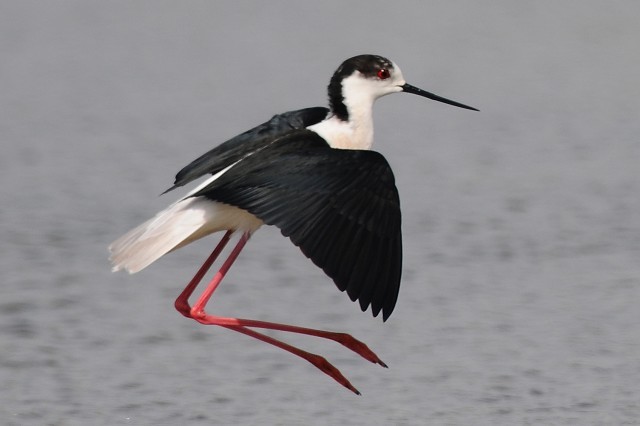
Black-winged Stilt, Kenfig NNR, Glamorgan (Photo: Julian)

Dotterel, Danby Beacon, North Yorkshire (Photo: Steve Race)

Lesser Yellowlegs, St. Mary's, Isles of Scilly (Photo: Martin Goodey)
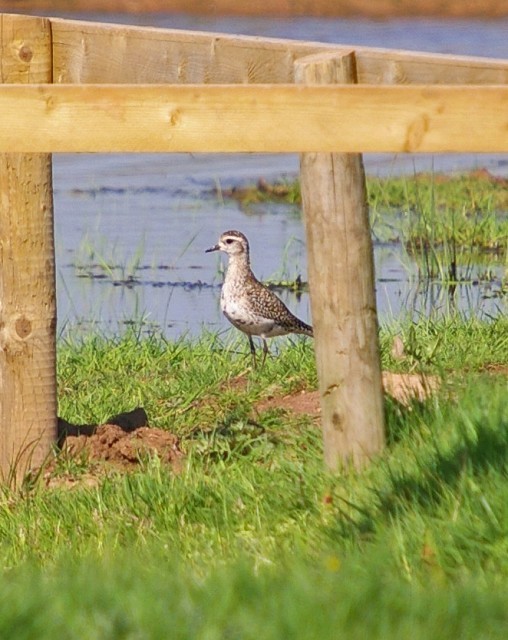
American Golden Plover, Exminster Marshes RSPB, Devon (Photo: Charlie)

Temminck's Stint, Elmley Marshes RSPB, Kent (Photo: Mick Southcott)
The pair of Black-winged Stilts at Neumann's Flash (Cheshire) remained in place throughout the week. A second pair made landfall this week and were tracked across the country for good measure. On 1st, the birds were found at Summer Leys LNR (Northamptonshire) before flying off to the south-east. Later the same day they arrived at Willington GPs (Bedfordshire) before spending the following day at Abberton Reservoir (Essex). By May 3rd, the duo had moved once more, down to Elmley Marshes RSPB (Kent) where they stayed to 4th (taking in Oare Marshes NR at the same time). In Wales, the lone male Black-winged Stilt remained at Kenfig Pool NNR (Glamorgan) to 4th before alighting at the Newport Wetlands (Gwent) on 5th-6th. Dotterels totalled over 60 birds this week, with the largest group being 15 at Choseley (Norfolk) to 2nd. Nine birds were on Pendle Hill (Lancashire) on 4th-5th and eight birds were at Danby Moor (North Yorkshire) on 5th-6th, with 11 there on 7th. On Scilly, the Lesser Yellowlegs was on Lower Moors, St. Mary's to 1st, with another seen around pools at Dunwich (Suffolk) on 6th, while other new Nearctic shorebirds included a first-summer American Golden Plover at Exminster Marshes RSPB (Devon) on 4th-7th and an adult Buff-breasted Sandpiper at Slimbridge WWT (Gloucestershire) on 3rd-4th. A Pectoral Sandpiper spent 3rd at Loch of Strathbeg RSPB (Aberdeenshire) while in Lancashire, a Pratincole species was reported at Wray on 2nd, but couldn't be relocated. Another Pratincole sp. was reported from the Outer Hebrides, over Berneray, on 4th. Up to 30 Temminck's Stints arrived this week, including three birds on Cley Marshes NWT (Norfolk) on 4th and three at Pulborough Brooks RSPB (West Sussex) on 6th-7th. On 7th, the first Broad-billed Sandpiper of the year was found at the Newport Wetlands (Gwent).

Glaucous Gull, Cobh, Cork (Photo: Sean Ronayne)

Iceland Gull, Cobh, Cork (Photo: Sean Ronayne)

Whiskered Tern, Berrow, Somerset & Bristol (Photo: James Packer)
A first-summer Bonaparte's Gull was seen at Marton Mere (Lancashire) on 3rd, while the Ross' Gull in the same county remained around Lytham St. Anne's until 7th, and continued to show well. Ring-billed Gulls this week were made up of birds noted over the course of previous weeks and months. The first-summer bird at Belfast Lough RSPB (Co. Antrim) remained to 4th at least, and the first-summer in Glamorgan was present to the same date. The adult Ring-billed Gull was on Loch Sandray, North Uist (Outer Hebrides) to 4th at least. A third-winter Caspian Gull was on the estuary at Blythburgh (Suffolk) on 3rd, while in Ireland, the first-year American Herring Gull remained in County Galway to 6th. A near-adult American Herring Gull was found at Stornoway, Lewis (Outer Hebrides) on 7th. There were only seven Glaucous Gulls this week (in Devon, Aberdeenshire, Counties Cork, Galway and Fermanagh, Orkney and the Outer Hebrides) while Iceland Gulls managed around 30 individuals, including three still on St. Mary's (Scilly) to 5th and three on South Uist (Outer Hebrides) to 6th. A third-winter Kumlien's Gull was on Fair Isle (Shetland) on 2nd-5th. A nice flush of Whiskered Tern records this week: first up was one in County Cork, at Kilcolman BWI NR on 3rd, almost a month to the day since one was seen there in very early April. On 4th, a Whiskered Tern arrived at Kenfig Pool NNR (Glamorgan) and remained there until 5th. On the same date, singles were seen at Brean Down (Somerset) before moving to nearby Berrow, and at Radipole Lake RSPB (Dorset), this bird remaining to 7th (when it moved to Lodmoor RSPB in the evening). On 6th, an adult Whiskered Tern flew past Hurst Spit and Pennington Marshes (Hampshire).
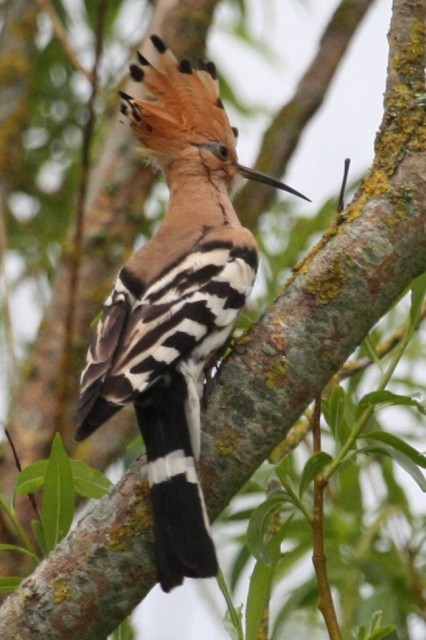
Hoopoe, Lodmoor RSPB, Dorset (Photo: Steve Carey)
A female Snowy Owl was found at Balranald RSPB, North Uist (Outer Hebrides) on 6th, remaining to the following day. Rather more summery was the double-figure tally of Red-rumped Swallows this week, spread far and wide. One spent the evening of 2nd at Spurn (East Yorkshire) and was followed by two or three birds on 4th. In Kent, singles were seen at Dungeness and St. Margaret's at Cliffe, and one was found at Audenshaw Reservoir (Greater Manchester). On 5th, Spurn bagged its second individual of the week, while another was found at Penycloddiau (Clwyd), while on 6th, singles were seen at Ballycotton (Co. Cork) and Radipole Lake RSPB (Dorset). On 7th, a remarkable five Red-rumped Swallows were seen at Portland (Dorset) - small autumn flocks aren't unheard of, but five in spring is something else. Also on 7th, one flew east past Hoylake seafront (Wirral), with other singles being seen near Croyde (Devon) and at Lough Aderra (Co. Cork). The Pallid Swift on Scilly remained on St. Agnes from 1st-3rd before being seen over St. Martin's on 4th. After two weeks of hitting over 20 birds, this week saw a slight drop in the number of Hoopoes reported, with around a dozen birds noted. Far-flung birds were noted at Valley Strand, North Uist on 2nd and on Unst (Shetland) on 3rd. Once again, Bee-eaters were noted in some excellent numbers over the course of the week but, typically, none really made themselves available for long. On Scilly, at least three birds roamed around St. Agnes, St. Martin's and St. Mary's on 1st-2nd. The largest group of the year so far came on 2nd, when at least 11 flew over Nanjizal (Cornwall). Also on 2nd, one was seen at Rame (Cornwall), flying around the church. Several birds were seen around Cornwall on 3rd: four flew over Porthgwarra, at least three remained around Nanjizal, two were over Land's End and three birds were seen at Predannack, on the Lizard. Also on 3rd, one was reported over Burnham Overy Dunes (Norfolk) and at least two birds were noted at four sites in Somerset. On 4th, one flew over Marsh Lane NR (West Midlands) and on 5th singles were seen at Dungeness (Kent) and Newhaven (East Sussex). The week concluded on 7th with a Bee-eater over Beeston Bump, Sheringham (Norfolk), at least two birds at Land's End (Cornwall) - with another at nearby Nanjizal - at least one (heard only) over Greenham Common (Berkshire) and one on Portland Bill (Dorset).

Short-toed Lark, Ballycotton, Cork (Photo: Sean Cronin)

Grey-headed Wagtail, Scalby Lodge Pond, North Yorkshire (Photo: Dave Mansell)
A male White-spotted Bluethroat was trapped and ringed at Gibraltar Point NNR (Lincolnshire) on 4th, while a male Red-spotted Bluethroat made landfall on Mousa (Shetland) on 7th. Another Bluethroat was seen at Fife Ness (Fife) on 5th. Six Wrynecks were seen this week, including three birds around Shetland and one in Cambridgeshire, at Paxton Pits NR, on 7th. A Tawny Pipit was seen briefly at Chapel Point, Mevagissey (Cornwall) on 7th, while two Richard's Pipits were seen this week: one was at Kelling (Norfolk) on 1st, with another at Cross Ness LNR (London) on 5th. A Short-toed Lark was seen at Ballycotton (Co. Cork) on 4th-5th, following one there on April 27th. Also in Ireland, at least one Short-toed Lark was on Mizen Head (Co. Cork) on 7th. The third bird of the week was seen at Great Orme (Conwy) on 4th.
It has been a good week for Subalpine Warblers - birds were noted from Scilly to Cleveland and out to Ireland too. The birds on Scilly may have been birds from last week; a male was on St. Mary's on 1st and a male of the Western form (cantillans) was found on St. Agnes (Scilly) on 2nd. A first-summer male Subalpine Warbler was found at Brotton (Cleveland) on 3rd and another first-summer male was found at Nanjizal (Cornwall) on the same date, remaining to 7th, when he was joined by a first-summer female. Another male was reported at Gorran Haven, also in Cornwall, on 2nd-3rd. On 4th, a male was discovered in County Waterford, at Brownstown Head and two Subalpine Warblers (both males) were seen in Norfolk; on Blakeney Point on 5th and at Sea Palling on 7th. An Icterine Warbler was at Land's End (Cornwall) on 3rd-4th.

Golden Oriole, Lakenheath (Hockwold) Fen, Suffolk (Photo: Robin Edwards)

Woodchat Shrike, Knockadoon Head, Cork (Photo: Sean Cronin)

Great Grey Shrike, Risby Warren, Lincolnshire (Photo: Russell Hayes)
This week saw a fairly hefty arrival of Golden Orioles around the country, with over 30 birds seen. Several birds were noted around Scilly, including a remarkable five on Bryher on 4th (with three there the following day). Half a dozen birds were seen in Cornwall, including two at Rame Head on 5th, while Kent claimed five, including three singles at Dungeness. Singles also made it to Bardsey Island (Gwynedd) on 5th and also to Shetland on 6th. Four birds had arrived back at Lakenheath Fen RSPB (Suffolk) by 4th. It was a good week too for Woodchat Shrikes - along with last week's three arrivals, five new birds made landfall here this week. The male at Helston Loe Pool remained to 2nd, the same date as the female at Sennen was last seen. The female on Bryher (Scilly) was present to 3rd, when a male arrived at Kynance (Cornwall). On 4th, a male was found on St. Mary's (Scilly) and another was on Knockadoon Head (Co. Cork) on the same date, remaining to 5th. Two new birds appeared on 5th - a female was at Wembury (Devon) and was still present to 7th, while a first-summer male was a decent find in South Yorkshire, at North Anston. On 7th, a female was found at Nanquidno (Cornwall), but could have been one of the birds from earlier in the week. Given that it is May, it is no real surprise that very few Great Grey Shrikes - just two in fact - lingered. The birds at Risby Warren (Lincolnshire) and Harthope Valley (Northumberland) were both last seen on 1st.
In Wales, the Rose-coloured Starling was seen again in Haverfordwest (Pembrokeshire) on 1st, but there has been no sign of the bird since then. Half a dozen Serins were noted this week: the singing male at Portland Bill (Dorset) remained to 2nd, while others included two flyovers in Hampshire (at Stokes Bay on 3rd and Hayling Island on 5th), two birds on 4th, at Selsey Bill (East Sussex) and Dungeness (Kent) and a singing male in Cumbria, at Ambleside, on 5th. A female Common Rosefinch was reported briefly from Walsey Hills NOA (Norfolk) on 4th. This week's review ends with a species that was once such a staple of spring birding, Ortolan Bunting. Ortolans have become increasingly rare at this time of year (fewer than ten birds in the past four springs), so one at Minsmere RSPB on 4th was certainly of note. Let's hope it may be the first of many of these beautiful buntings seen over the next six weeks or so...
Photo of the Week

Dipper, Lathkill Dale NNR, Derbyshire (Photo: Sue Tranter)
With their handsome appearance and unique behaviours, Dippers are popular photographic subjects. BirdGuides members have certainly uploaded some superb images of this species over the last few years. Prior to this week, though, these have never included any flight shots. Freezing a Dipper at the instant it takes flight from a rock, Sue Tranter has captured a superb action image. The lighting, background and exposure would be commendable even in a static bird portrait, but to achieve these in such a dynamic composition is exceptional.
Other notable photos

Little Ringed Plover, undisclosed site, Hampshire (Photo: Lee Fuller)

Yellow-crowned Night Heron, Jamaica (Photo: Paul_leafe)

Common Tern, Summer Leys LNR, Northamptonshire (Photo: Richard Bedford)

Coot, Summer Leys LNR, Northamptonshire (Photo: Richard Bedford)

Common Redstart, Aymestrey, Herefordshire (Photo: George Ewart)

Pied Flycatcher, Coombes Valley RSPB, Staffordshire (Photo: Damian Waters)
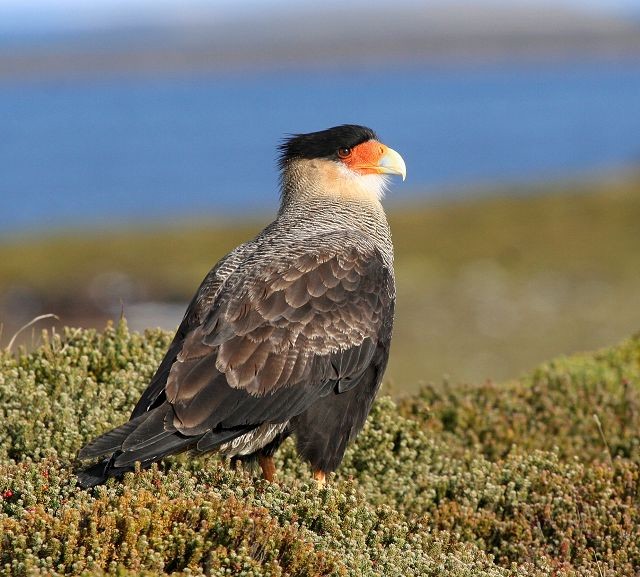
Southern Caracara, Falkland Islands (Photo: Steve Copsey)

Lapwing, Cley Marshes NWT, Norfolk (Photo: Nigel Pye)

Gannet, Troup Head, Aberdeenshire (Photo: Alan Sinclair)

Little Gull, Belfast Lough RSPB, Antrim (Photo: Craig Nash)

Swallow, Marshside RSPB, Lancashire (Photo: Andy Bate)

Hobby, Brandon Marsh NR, Warwickshire (Photo: Max Silverman)

Black-winged Stilt, Elmley Marshes RSPB, Kent (Photo: Steve Ashton)

Yellow Wagtail, Lydney, Gloucestershire (Photo: Lewis Thomson)

Shag, Elland GP, West Yorkshire (Photo: Sean Gray)

Bearded Tit, undisclosed site, Lincolnshire (Photo: Dean Eades)
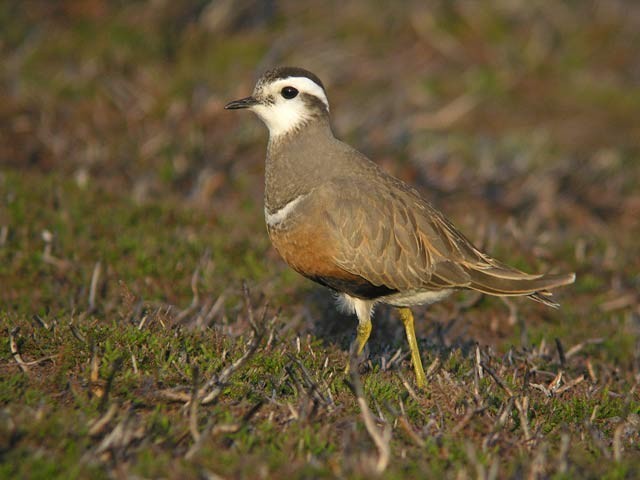
Dotterel, Danby Beacon, North Yorkshire (Photo: Ian Boustead)

Common Treecreeper, Mere Sands Wood LWT, Lancashire (Photo: Richard Steel)

Common Whitethroat, Nocton Fen, Lincolnshire (Photo: Matt Latham)

Little Egret, Slimbridge WWT, Gloucestershire (Photo: Chris Cook)

